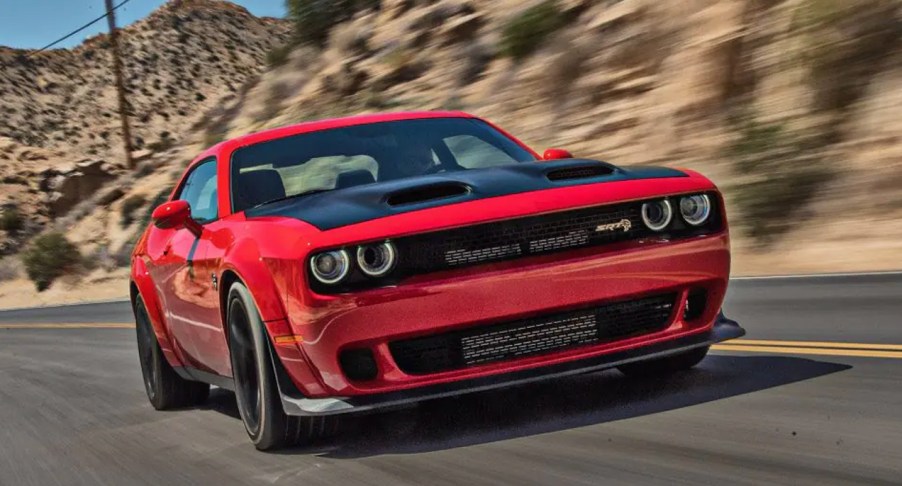
Hellcats and Hornets: Dodge Is Done Resisting the Electric Future
In an exciting turn of events, Dodge has announced the discontinuation of two of its most popular nameplates and the introduction of a new nameplate. The American automaker is reshuffling the deck and adapting to the state of the automotive industry. Popular automakers have eyes on the electric future. Stellantis was initially resistant to the electric future in comparison to some of its rivals, but it’s clearly ready to play ball. Dodge is done resisting change. The age of the Hellcat appears to be over, and the Hornet SUV is ushering in Dodge’s new lineup of vehicles.
Dodge and the death of the Hellcat

Dodge is synonymous with American muscle. The automaker built its brand by producing popular muscle cars like the Dodge Charger and Dodge Challenger. These nameplates relied on powerful (and often large) engines. At one point, the V8 engine was a favorite among gearheads. Dodge’s Hellcat engine quickly gained attention and won the hearts of many automotive enthusiasts. Its engine growls created the perfect symphony for gearheads.
Dodge owes a large part of its current status and cultural relevance to the Hellcat engine. So naturally, the automaker has been hesitant to let go of the V8 as it faded into obscurity over the years. Toyota’s decision to let go of the Toyota Tundra’s standard V8 engine sent ripples throughout the entire industry.
The Tundra became an antiquated gas guzzler in the eyes of many consumers, so Toyota was all but forced to redesign the pickup completely. Now it has new engine options that provide more power and better fuel economy.
Dodge is going back to the drawing board with two of its most popular nameplates: the Charger and Challenger. The company announced that the muscle cars will cease to exist (as we know them) after the 2023 model years are out. The future of the Hellcat engine is up in the air, but all signs lead to the engine’s death alongside the two popular muscle car nameplates.
A new era of American muscle
Gas-powered chargers and challengers may not be long for this Earth, but Dodge certainly isn’t done producing muscle cars. The American automaker will likely make mild adjustments to the Charger and Challenger silhouettes, place electric powertrain systems into the muscle cars, and create new nameplates that have a clear resemblance to its best-selling models.
This isn’t the end of Dodge muscle cars, it’s the beginning of Dodge EVs. Electric vehicle powertrain systems are capable of producing impressive amounts of torque. The Rivian R1T Launch Edition is a perfect example of an electric vehicle that has plenty of power. It makes an incredible 835 horsepower and 908 lb-ft of torque.
The Dodge Hornet is changing the game

The 2023 Dodge Hornet will be the only subcompact SUV in Dodge’s lineup. It will also be the only plug-in hybrid electric vehicle in the automaker’s lineup when it arrives.
The Dodge Hornet is the first step in the company’s push to incorporate more hybrid and electric vehicles in its lineup. It will pave the way for future Dodge EVs. According to MotorTrend, the 2023 Dodge Hornet starts at around $30,000.
Read more about the 2023 Dodge Hornet in the next article below.



